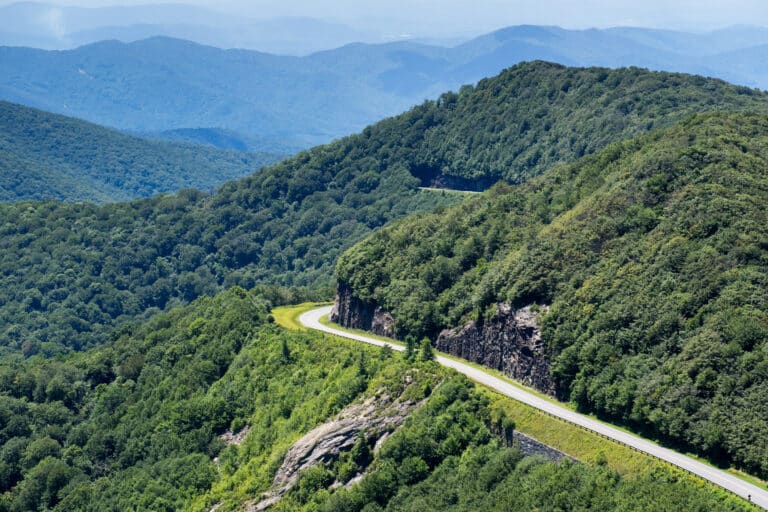Seneca Rocks rises close to 900 feet above the North Fork of the South Branch of the Potomac River Valley. Although it is believed Native Americans climbed the rocks, the first recorded ascent was in the 1930s. Throughout most of the rest of the 1900s, the views that could be obtained from its west-facing wall were available only to rock climbers or those willing to endure a steep and eroded pathway on the rocks’ eastern side. In the late 1990s, the forest service constructed a trail for the rest of us. It won’t bring you to the top of the rocks, but it does take you to a grand view. The pathway gains almost 700 feet in elevation, but switchbacks and benches to rest upon make it accessible to just about anyone. Signposts along the way interpret the area’s natural history, and the information learned here will add greatly to future hikes in West Virginia.
It’s only 1.5 miles of walking to reach the observation platform. Beside you are Seneca Rocks’ vertical walls, with the North Fork flowing directly below. Spread along the valley floor are the forest service’s Discovery Center and Shenandoah Shadows Campground. On the western horizon are Spruce Mountain and the state’s highest point, Spruce Knob. Since you can go no further (a sign reads “Here Ends the Realm of the Hiker”), it’s time to retrace your steps and return to your car at 3.0 miles.
Before beginning the hike, consider visiting the Discovery Center to obtain more background information. Displays depict the geology, Native Americans, natural history, early settlers, and history of climbing in the area.








